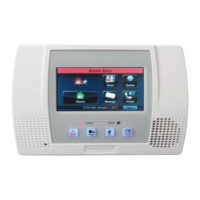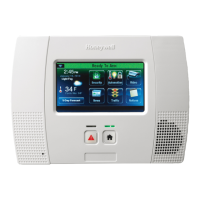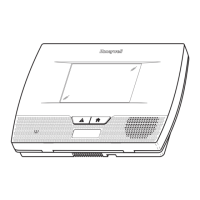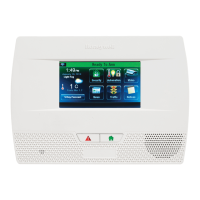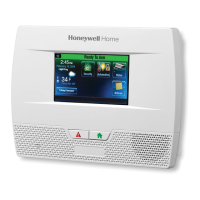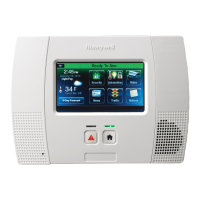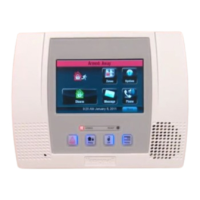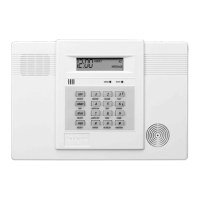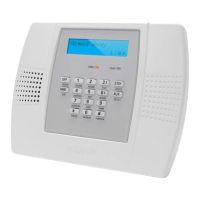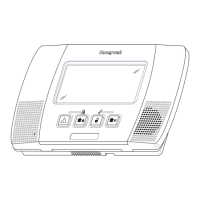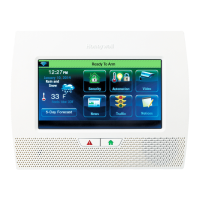
Do you have a question about the Honeywell L5100 Series and is the answer not in the manual?
| Brand | Honeywell |
|---|---|
| Model | L5100 Series |
| Category | Security System |
| Language | English |
Overview of the security system's capabilities and components.
Lists key features such as Stay/Away arming, panic keys, and two-way voice.
Explains security codes, alarm behavior, and two-way voice functionality.
Provides a quick reference guide for system operations and functions.
Describes the touch screen interface and its main components.
Explains system status icons and their definitions on the display.
Explains how to navigate the LCD display and dashboard screens.
Explains how to check system status and understand the Ready LED indicator.
Details the procedure for arming the system in STAY mode.
Explains exit delay, restarting exit delay, and handling exit alarms.
Explains how to disarm the system and silence alarms.
Explains how to bypass individual protection zones.
Describes manually activating panic functions for emergencies.
Explains how to turn Chime Mode on or off for door opening alerts.
Details how to turn Voice Mode on or off for system announcements.
Explains assigning secondary user codes and security features.
Describes how to view system events like arming, disarming, and alarms.
Details how to record, play, and delete messages.
Covers adjusting volume, brightness, contrast, and chime/ringer settings.
Details setting the system's date and time.
Introduces programming triggers, home automation, and rules.
Explains programming scheduled functions and accessing schedules.
Introduces programming scenes and adding new scenes.
Explains programming and recording reminders for display/announcement.
Details how to view and join available WiFi networks.
Explains the speaker phone functionality and its operational limitations.
Explains remote access to the system via touch-tone phone commands.
Describes web-based services for remote system communication.
Introduces the Slide Show/Screen Saver feature for displaying images.
Explains the operation of the fire/CO alarm system and its detectors.
Provides instructions for responding to a fire emergency.
Gives instructions for responding to a carbon monoxide emergency.
Details how to silence and clear fire/CO alarms.
Lists NFPA recommendations for smoke detector placement in homes.
Provides steps for establishing and practicing a fire escape plan.
Introduces test modes: Walk Test, Dialer Test, and Reboot functions.
Covers weekly system testing and general routine care.
Details how to safely clean the touch screen interface.
Lists icons displayed on the Home screen for system status.
Explains icons for zone status and LED meanings.
Covers FCC Class B digital device statements and compliance.
Details Industry Canada compliance statements for equipment.
FCC Part 68 and IC notices for telephone interface connection.
Lists limitations and potential failure points of the alarm system.
